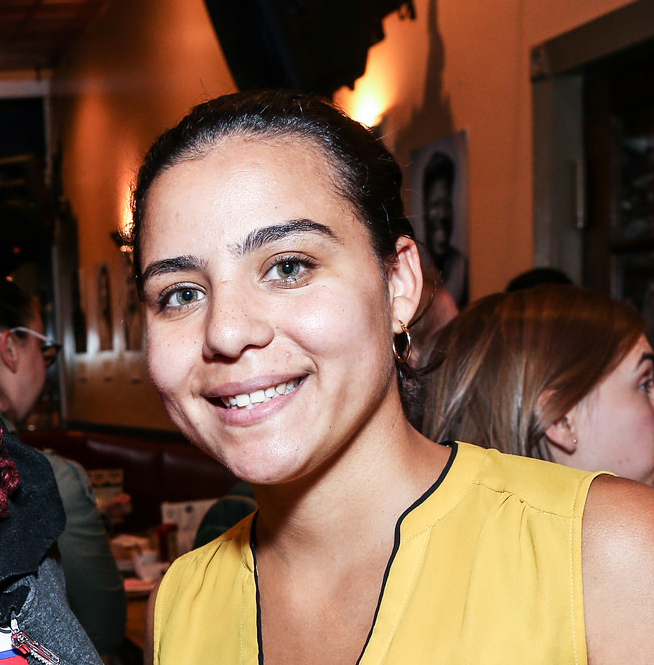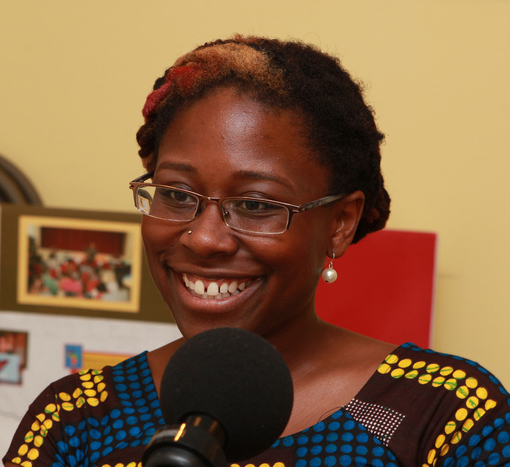In a School Where Black Lives Matter
Teachers in our Stories from Our Classrooms alumni group responded to the following prompt in their session on January 28: “In a school where Black Lives Matter, we….”
This visioning was ideal preparation for the DC Black Lives Matter Week of Action in Schools.
Below are some excerpts from their responses:
Faye Colon
In a school where Black Lives Matter, we tell students the truth about our country's history and acknowledge the contributions of people of color in building our country. In classrooms around the country, students are being taught a Eurocentric version of history one which erases the role of people of color and glorifies the role of white men (and women). Even more people of color have often not been credited for the contributions they made which led to advancements in technology, medicine, engineering etc. When students are taught about people of color, they are often told a story in which people of color are viewed as victims; in reality, people of color have constantly fought against the oppression of their people. It is important that curriculum begins to change so that students learn the grass-roots version of history; a history when taught in this way is often a story about people of color. In a school where Black Lives Matter educators, students and community members have honest conversations about the legacy of racism, white privilege and systemic oppression. In a school where Black Lives Matter, students feel like their stories matter and are provided opportunities to learn about their history.
Monét Cooper
In a school where Black Lives Matter, we
allow ourselves to be transformed.
do not believe we have the answers or know the answers.
are committed to transformation of ourselves and our community from a place of love, joy, healing and liberation.
do not allow fear, ignorance, or dominant narratives to stop us from challenging silence, announcing the truth, and embracing the truth.
Courtney Cothran-Fenner
In a school where Black Lives Matter, we
love Black children with the same patience, love, and grace that we love white children
partner with parents instead of preach to them
listen to Black families when they want to discuss how we are failing their Black sons
listen to Black girls who say they are the only ones in school that no one will date
normalize Blackness every day rather than saving Blackness for Black History Month and the MLK holiday
Maureen Ingram
In a school where Black Lives Matter, we embrace uncomfortable, messy, and yet essential conversations about race. We dare to teach on issues of race and discrimination, to empower every student. We recognize the systemic injustice of our society and we work daily to provide a school environment that is safe, inclusive, and affirming for every student, without exception. Students will learn about our nation’s history from a variety of perspectives, to glean how policies, structures, laws, organizations, and communities came to be. The school cultivates critical thinking, restorative justice, and change-making. Teachers and students learn together to uncover the “why” behind the now, to find ways to hold the tension of conflicting views with respect, space, and patience, and to imagine and take actions to form a more just society. In a school where Black Lives Matter, we teach and learn with a social justice lens.
Topher Kandik
In a school where Black Lives Matter, we recognize that our school is our home. We hold our proud family to high academic standards. We do not lower the bar for our brothers and sisters because we know that all of us have brilliance to share with the world. We ask that all of us learn with open eyes and open hearts. We want to see the world clearly and interact with the world authentically. There is much to love in this world and just as much to change. We want our family to recognize oppression in all its pernicious forms and work to change not just the narrative but the system that produces that narrative. We want our students to know that their lives matter, their voices matter, their indomitable energy and spirit are going to lead the next generation of change-makers. We want to be ready for that. We ask that students think broadly, live joyously, act compassionately. We want to speak out against injustice in all its forms. We do not want to sit idly, to feign helplessness, to eschew our own greatness. We do not believe that our black and brown brothers and sisters are inferior. How could we? We believe they are the spark that will ignite the fire of change our neighborhoods, our communities, our city, and our country needs to live together with love and peace. We think that education is a stepping stone to this better world. We think that our school community can be the model for making the change we want to see in the world. We believe that we must start with our family in our home.
Gregory Landrigan
In a school where Black Lives Matter, we talk about it. All of it . . . . The heritage of oppression that sits under our history often hidden, but frequently not hidden well. Where Black lives Matter, our studies become a space to arm ourselves with the knowledge needed to affect positive change toward justice and students know their educators see the brilliant light of their future success. Where Black Lives Matter, students bring themselves and their stories, their families and their culture into their learning and hopefully leave empowered and ready. Where Black Lives Matter, all students are loved and more than that, all students know they are loved, supported, and that their best interests are the purpose of every decision.
Victoria Merriweather
In a school where Black Lives Matter, we don't shy away from conversations around privilege or the dismantling of communities and cultures. Histories washed away on the shore where the slave ships docked, and again covered with the dirt of cotton crops and again with cranes and wrecking balls. But we will not begin the story there but remind our students of the beauty of their heritage before it became blood soaked. Armor them against these shattered perceptions. So they hold their heads high in and outside our walls. Regal and resistant.
Ashley Moore
In a school where Black Lives Matter,
We teach history accurately.
We are humanitarians.
All voices matter.
In a school where Black Lives Matter, we…
Put our money where our mouths are
And hands where our hearts are.
We are strategic and holistic in our approach to educating our children and we pour sustained resources into ensuring the effectiveness and completion of our work.
Debbie Polhemus
In a school where Black Lives Matter, we...
We celebrate our students from Africa, the Caribbean and the US.
We lament the fact that our faculty and staff do not reflect the cultures and experiences of our students as much as we want.
We condemn the institutional racism that continues to privilege white and middle-class students.
We promise to draw on funds of knowledge of our students of color to inform instruction.
We provide opportunities for students to interact with other students outside their own circles, to develop friendships and replace stereotypes with personal experiences.
We as adults make it known that we want to be seen as allies when black lives and brown lives are threatened by police, courts, ICE and other powerful forces.
We recognize the contribution of African Americans, Africans in the Diaspora, and Africa to history, science, math, medicine, literature, arts and sports.
Amy Rothschild
In a school where Black Lives Matter, we
Say Black frequently, with confidence and love.
Build upon stories of historical injustice and resistance to recognize continuity with the present
Welcome Black parents and experts not just on "diversity" initiatives but as full-fledged members of school communities
Examine texts and visuals carefully, especially when they are books we are attached to from our own youth. We recognize that we might have great affection for works of literature that are both dear to us and deeply flawed
Advocate beyond the classroom, and make our advocacy for racial justice visible to our students
Jill Weiler
Black Lives Mattered in the middle school where I began my DC teaching career. At that time, nearly all of the teachers were Black. Like our students. They incorporated major contributions of African Americans in history, science, mathematics, art, literature and poetry into the curriculum—not just in February, but all year long. More importantly, they modeled values and traits that we hope all our children will inherit: high expectations for self and others, respectful and assertive communication, genuine collaboration with peers, and unconditional acceptance and love.
More than 30 years later, we, as educators across the United States, are wrestling with the challenge of creating schools where Black Lives Matter... often in communities where Black Lives don’t matter and in schools where the number of Black teachers is declining.












